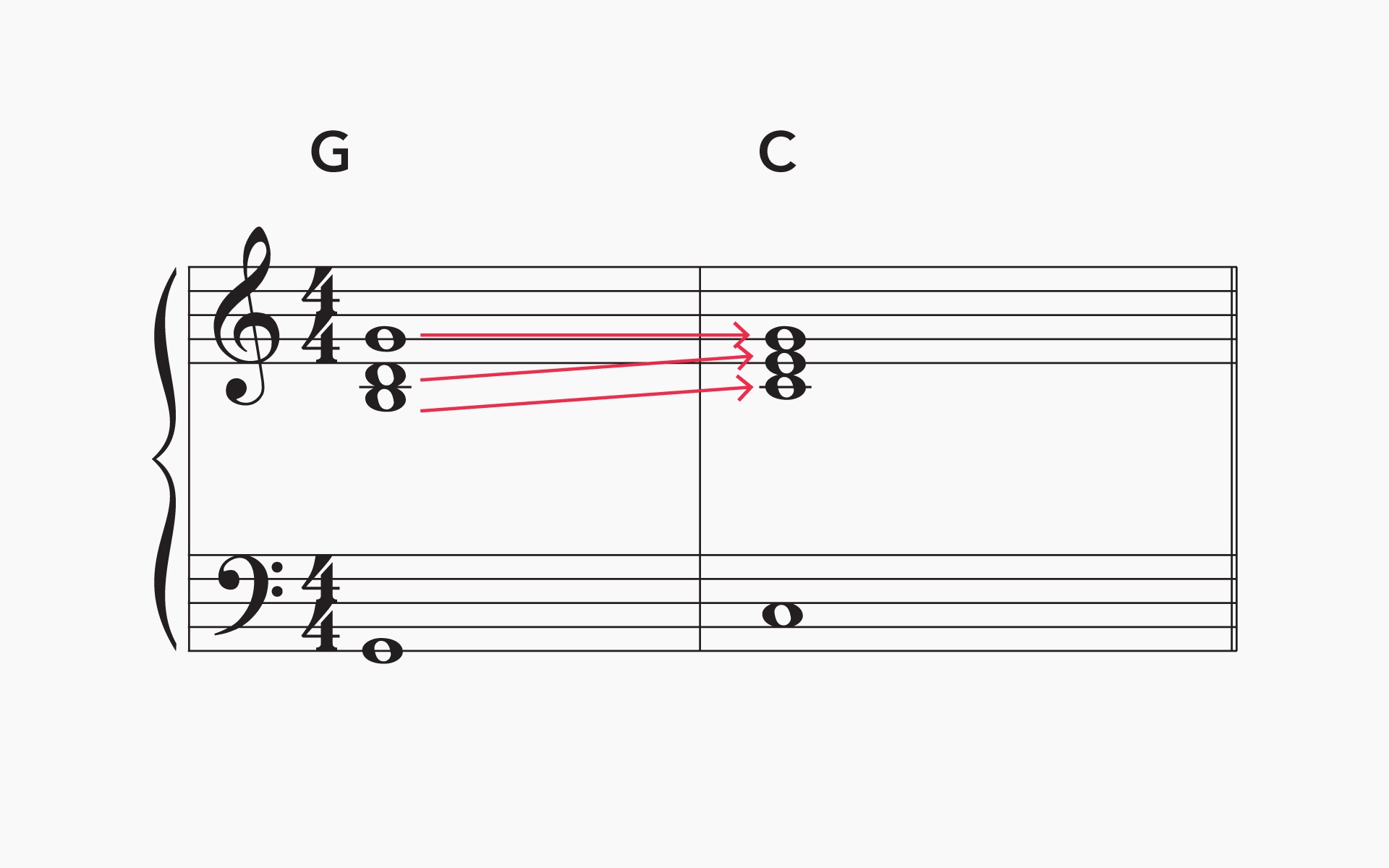Home>Production & Technology>Music Theory>How To Make A Reduction Music Theory


Music Theory
How To Make A Reduction Music Theory
Published: January 30, 2024
Learn how to make a reduction in music theory with our comprehensive guide. Master the essentials of Music Theory and improve your understanding of musical composition.
(Many of the links in this article redirect to a specific reviewed product. Your purchase of these products through affiliate links helps to generate commission for AudioLover.com, at no extra cost. Learn more)
Table of Contents
Introduction
Welcome to the exciting world of music theory! Whether you’re a budding musician or a seasoned composer, understanding the principles of music theory is essential to mastering your craft. One of the fundamental concepts in music theory is reduction, a technique that allows us to analyze and interpret complex musical compositions.
Reduction in music theory refers to the process of simplifying a piece of music to its essential elements. By removing non-essential components, we can focus on the underlying structure and relationships within the composition. This analytical approach helps us gain a deeper understanding of how the music works and allows us to make meaningful interpretations.
Music reduction is commonly used in various contexts, including music education, composition analysis, and performance preparation. It assists in unraveling the intricate layers of a musical piece, revealing its compositional techniques, harmonic progressions, and melodic patterns. Furthermore, reduction can aid in identifying recurring themes, motifs, and structural features that contribute to the overall musical experience.
In this article, we will explore the process of making a reduction in music theory. We will walk through a step-by-step guide, analyze the results, and discuss the practical applications of reduction. Whether you’re a music student, a composer, or simply an enthusiast eager to delve deeper into music analysis, this article will provide you with the tools and knowledge you need to navigate the world of music theory.
So, let’s dive in and uncover the fascinating world of reduction in music theory!
Understanding Reduction in Music Theory
Reduction in music theory is a powerful analytical tool that allows us to simplify complex musical compositions. By reducing a piece of music, we can identify the underlying structure, harmonic relationships, and melodic patterns that contribute to its overall composition. It helps us unravel the layers of a piece and gain a deeper understanding of its musical elements.
When we talk about reduction in music theory, we’re not referring to the act of reducing the size or duration of a composition. Instead, we’re focusing on the process of distilling the essential elements of a musical piece to gain insights into its structural and compositional characteristics. Reduction involves stripping away non-essential components, such as ornamentation, embellishments, and texture, to reveal the core musical ideas.
One of the primary goals of reduction is to identify and analyze harmonic progressions. By reducing a piece, we can isolate and examine the chord progression, identifying the tonal relationships and harmonic functions present in the composition. This allows us to understand how the composer developed and structured the musical ideas to create tension and resolution throughout the piece.
Reduction also helps us understand the melodic and motivic development within a composition. By simplifying the melodic lines and identifying recurring motifs, we can gain insights into the composer’s use of thematic material and their manipulation throughout the piece. This analysis allows us to understand the melodic structure and the relationship between different melodic ideas.
Additionally, reduction can provide us with a deeper appreciation for the form and structure of a musical composition. By simplifying the piece, we can identify the various sections, such as verses, choruses, or movements, and understand how they are connected and developed. This analysis allows us to see the overall architecture of the piece and how the composer creates a sense of coherence and unity.
Overall, reduction in music theory is a valuable analytical tool that helps us uncover the underlying structure, harmonic relationships, melodic patterns, and form of a musical composition. By distilling a piece down to its essential elements, we can gain a deeper understanding of the composer’s intentions, techniques, and the overall musical experience that they have crafted.
Step-by-Step Guide: Making a Reduction
Now that we understand the concept of reduction in music theory, let’s explore a step-by-step guide on how to make a reduction of a musical composition. While the specific approach may vary depending on the complexity of the piece and personal preferences, these general steps will provide you with a solid foundation.
- Select the Piece: Begin by choosing a musical composition that you would like to analyze and reduce. It could be a classical piece, a jazz standard, or even a contemporary song. Make sure to select a piece that interests you and challenges your analytical skills.
- Analyze the Score: Carefully study the score of the chosen piece. Familiarize yourself with the key signature, time signature, and any notations or symbols used in the music notation. Pay close attention to the structural elements, such as sections, phrases, and cadences.
- Identify the Melodic Lines: Start by identifying the main melodic lines in the composition. Focus on the primary melody and any accompanying counterpoint or secondary melodic ideas. It can be helpful to notate the melody separately to have a clear visual representation.
- Examine the Harmony: Analyze the chord progressions and harmonic relationships within the composition. Identify the root, quality, and function of each chord. You can notate the chords above the melodic lines to visualize the harmonic structure.
- Eliminate Non-Essential Elements: Begin the reduction process by removing any non-essential elements from the composition. This includes ornamentation, embellishments, and intricate textures. Simplify the melodic lines by focusing on the core notes and eliminate any unnecessary flourishes.
- Condense the Harmony: Simplify the harmonic progression by reducing the chords to their essential qualities. Focus on the root movement and identify any common chord progressions or patterns that occur throughout the piece.
- Identify Motivic Development: Analyze the development of motifs and recurring melodic ideas in the composition. Identify any variations or transformations of these motifs and track their evolution throughout the piece.
- Analyze the Form: Study the overall form and structure of the composition. Identify the different sections, such as verses, choruses, or movements, and understand how they connect and develop. Analyze the transitions between sections and any key changes that occur.
- Reflect and Interpret: Once you have made the reduction, take a step back and reflect on the insights you’ve gained. Analyze the relationships between the melodic lines, chord progressions, motivic development, and form. Interpret the composer’s intentions, techniques, and the emotional narrative they have crafted in the piece.
Remember, making a reduction requires careful analysis, interpretation, and a deep understanding of the musical composition. It is a fluid and iterative process, and there is no one-size-fits-all approach. Allow yourself to be flexible and adapt the steps to best suit the specific composition and your personal analytical style.
By following this step-by-step guide, you will be able to create a reduction that unveils the core elements of a musical composition, allowing you to gain a deeper understanding and appreciation for the music.
Analyzing the Reduction
Once you have successfully made a reduction of a musical composition, the next step is to analyze and interpret the results. Analyzing the reduction allows you to delve deeper into the structure, harmony, melody, and form of the composition, providing valuable insights into the composer’s intentions and techniques.
Here are key aspects to consider when analyzing the reduction:
- Harmonic Analysis: Examine the reduced chord progressions and identify the harmonic relationships present in the composition. Look for patterns, cadences, and chord substitutions that contribute to the overall harmonic progression. Consider the tension and resolution created by the harmonic choices and how they support the melodic elements of the composition.
- Melodic Analysis: Analyze the simplified melodic lines in the reduction. Pay attention to the motifs, themes, and variations that emerge from the reduction. Identify any melodic development, sequences, or repetitions that contribute to the overall musical structure. Consider the contour, intervallic relationships, and rhythmic patterns in the melodies.
- Rhythmic Analysis: Study the rhythmic elements of the composition as revealed in the reduction. Identify recurring rhythmic patterns, syncopations, and rhythmic motifs. Consider the relationship between the rhythm and other musical elements, such as harmony and melody, and how they contribute to the overall musical effect.
- Formal Analysis: Analyze the structure and form of the composition based on the reduction. Identify the various sections and their relationships, such as verses, choruses, or movements. Consider any thematic development, key changes, or transitional passages that shape the overall form. Reflect on how the composer creates a sense of unity and coherence within the composition.
- Interpretation: Reflect on the insights gained from the reduction and analysis. Consider the emotional narrative, expression, and mood portrayed in the composition. Reflect on the composer’s choices of harmony, melody, rhythm, and form and how they contribute to the overall artistic intention. Interpret the composition through your own musical lens and connect with the message and meaning conveyed.
Analyzing the reduction allows you to unlock the compositional techniques, relationships, and structure within a musical composition. It provides a deeper level of understanding and appreciation for the music, allowing you to engage with it on a more profound level.
Remember that analysis is not a rigid process but rather a fluid exploration and interpretation of the music. Be open to different perspectives, and allow your own musical instincts and experience to guide your analysis. The goal is to uncover the unique qualities of the composition and interpret them in a way that resonates with you.
By carefully analyzing the reduction, you will gain valuable insights into the inner workings of a musical composition, fostering a deeper understanding and appreciation for the artistry behind the music.
Practical Applications of Reduction in Music Theory
Reduction in music theory plays a vital role in various practical applications, contributing to the understanding, analysis, and interpretation of musical compositions. Let’s explore some of the key practical applications of reduction:
- Music Education: Reduction is widely used in music education to help students analyze and understand complex musical compositions. By simplifying the music, students can focus on the essential elements, such as melody, harmony, and rhythm, and develop a deeper understanding of how these elements interact within the composition.
- Composition Analysis: Reduction is an invaluable tool for composers to analyze and study the works of other composers. By reducing a composition, composers can gain insights into techniques, structures, and harmonic progressions used by other composers, allowing for inspiration and applying similar techniques to their own compositions.
- Performance Preparation: Reduction is often used by musicians as part of their performance preparation. By reducing a piece, musicians can gain a clear understanding of the musical structure, harmonic relationships, and melodic patterns, which enables them to interpret the piece more accurately and perform it with greater intent and expression.
- Aural Training: Reduction is instrumental in developing aural skills in musicians. By reducing a piece and listening closely to the simplified elements, musicians can train their ears to identify melodic intervals, harmonic progressions, and rhythmic patterns. This form of active listening helps develop a keen sense of musical perception and enhances overall musicality.
- Music Analysis and Research: Reduction is a common approach used in music analysis and research to gain insights into the compositional techniques, structural elements, and harmonic relationships within a piece of music. It provides a focused lens through which researchers can study and interpret the music, offering new perspectives and contributing to the body of knowledge in music theory.
These practical applications highlight the versatility and importance of reduction in music theory. Whether it’s in a classroom setting, during composition analysis, performance preparation, aural training, or scholarly research, reduction provides a valuable framework for unraveling the complexities of musical compositions and gaining a deeper understanding of their artistic and technical elements.
By applying reduction techniques in these various contexts, musicians, composers, educators, and researchers can enhance their musical knowledge, skills, and appreciation. Reduction brings the intricate workings of music theory closer to our grasp, enabling us to engage more profoundly with the compositions we study, perform, and explore.
Common Challenges and Solutions
While reduction in music theory can be a valuable tool for analyzing and interpreting compositions, it is not without its challenges. Let’s explore some of the common challenges that may arise during the reduction process and discuss potential solutions to overcome them:
- Complexity and Difficulty: Some compositions can be incredibly complex and challenging to reduce. The abundance of intricate textures, dense harmonies, and elaborate melodic lines can make it overwhelming to identify the essential elements. In such cases, it is helpful to break the piece down into smaller sections and focus on reducing one section at a time. Gradually, these smaller reductions can be integrated to form a complete reduction of the entire piece.
- Subjectivity and Interpretation: Reduction involves interpretation, and different musicians may have varying perspectives on how to simplify and condense a musical composition. It is crucial to recognize that reduction is a subjective process, and there is no one “correct” way to do it. Embrace different interpretations and be open to exploring multiple reductions to gain a more comprehensive understanding of the music.
- Maintaining Musical Integrity: When making a reduction, it is essential to maintain the integrity and essence of the original composition. Stripping away non-essential elements should not compromise the core musical ideas, emotional content, or intended expression. Continuously refer back to the complete score and listen to recordings of the piece to ensure that the reduction accurately represents the composer’s intentions.
- Transcribing and Notating: Depending on the complexity of the composition, transcribing and notating the reduction can be a time-consuming and challenging task. To overcome this, consider using music notation software or apps that can facilitate and streamline the process. These tools allow for quick and accurate transcriptions, enabling you to focus more on the analytical aspects of the reduction.
- Finding the Balance: Reduction involves striking a balance between simplification and retaining the essential musical elements. It is crucial to distill the composition down to its core elements while still capturing the essence of the original piece. Continuously evaluate the reduction, seeking feedback from experienced musicians or music educators who can provide valuable insights and help ensure the balance is maintained.
By acknowledging these common challenges and approaching them with patience, adaptability, and a willingness to explore different strategies, you can overcome them and make the reduction process more effective and rewarding. Stay committed to the goal of gaining a deeper understanding of the composition and embrace the journey of uncovering the intricate layers of the music.
Remember, reduction is not a rigid formula but a creative and analytical process that allows you to engage with the music on a more intimate level. Embrace the challenges as opportunities for growth, experimentation, and deeper musical discovery.
Conclusion
Reduction in music theory is a powerful tool that allows us to analyze, interpret, and appreciate the intricate elements of a musical composition. By simplifying a piece of music and distilling it down to its essential components, we can gain a deeper understanding of its structure, harmony, melody, and form. Through reduction, we uncover the compositional techniques, relationships, and expressive qualities that make each piece unique.
Throughout this article, we have explored the process of making a reduction, from selecting a composition to analyzing the reduced elements. We have discussed the practical applications of reduction in music education, composition analysis, performance preparation, and scholarly research. We have also highlighted some common challenges that may arise during the reduction process and provided potential solutions to overcome them.
Ultimately, reduction allows us to connect with the music in a profound and meaningful way. It provides a window into the composer’s intentions, techniques, and emotional narrative. By analyzing and interpreting the reduction, we can gain valuable insights, deepen our musical knowledge, and enhance our appreciation for the artistry behind the composition.
As you embark on your journey of exploring reduction in music theory, remember to approach it with curiosity, creativity, and an open mind. Embrace the challenges that may arise and view them as opportunities for growth and learning. Continuously refine your analytical skills and interpretation, and trust your instincts as a musician.
Whether you’re an aspiring musician, a seasoned composer, or a music enthusiast, the process of making a reduction in music theory can fuel your passion and deepen your understanding of the music you encounter. So, grab your favorite composition, dive into the reduction process, and uncover the hidden gems within the music.
Enjoy the beauty of reduction in music theory, and let it guide you to new levels of musical understanding and appreciation!











